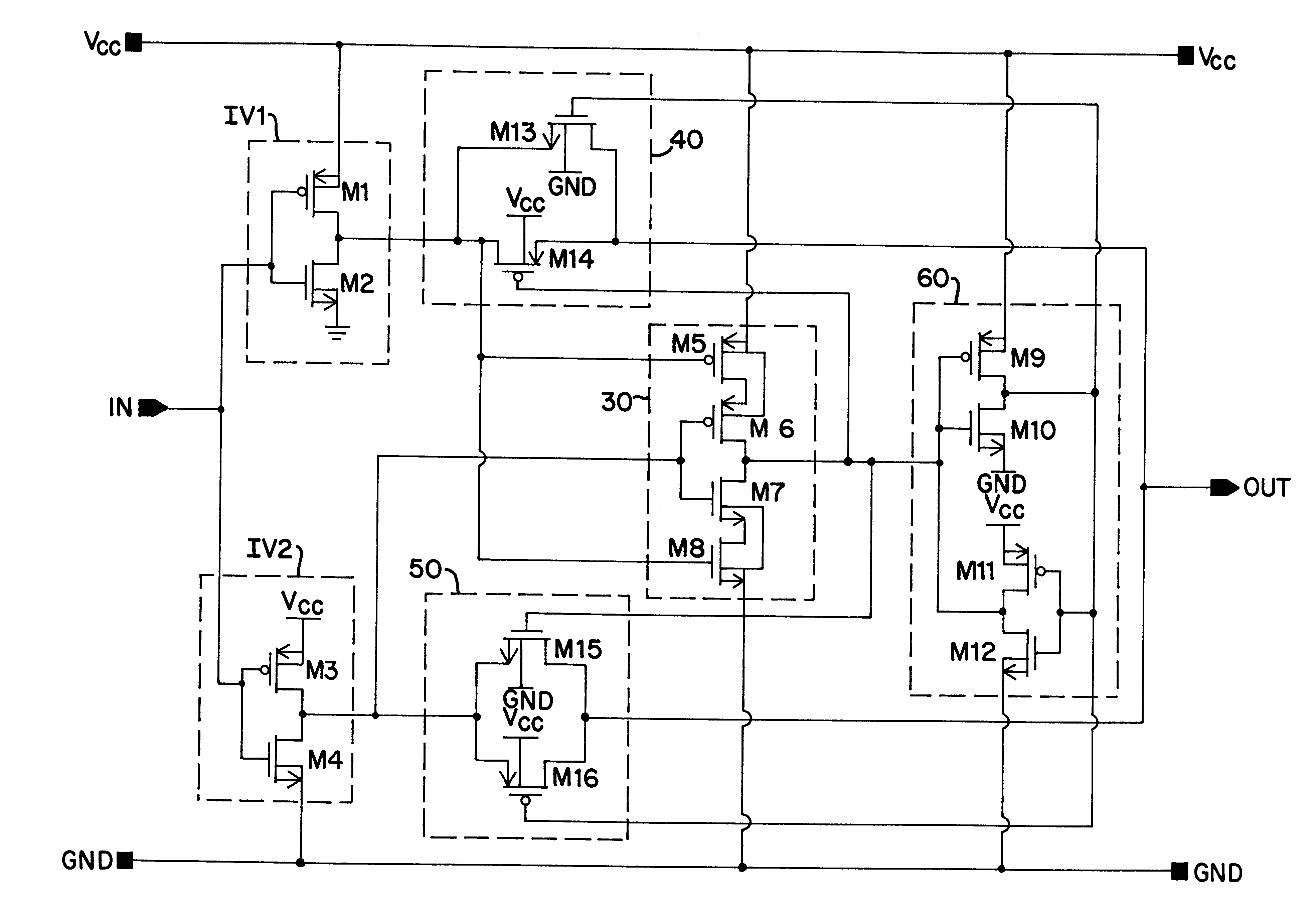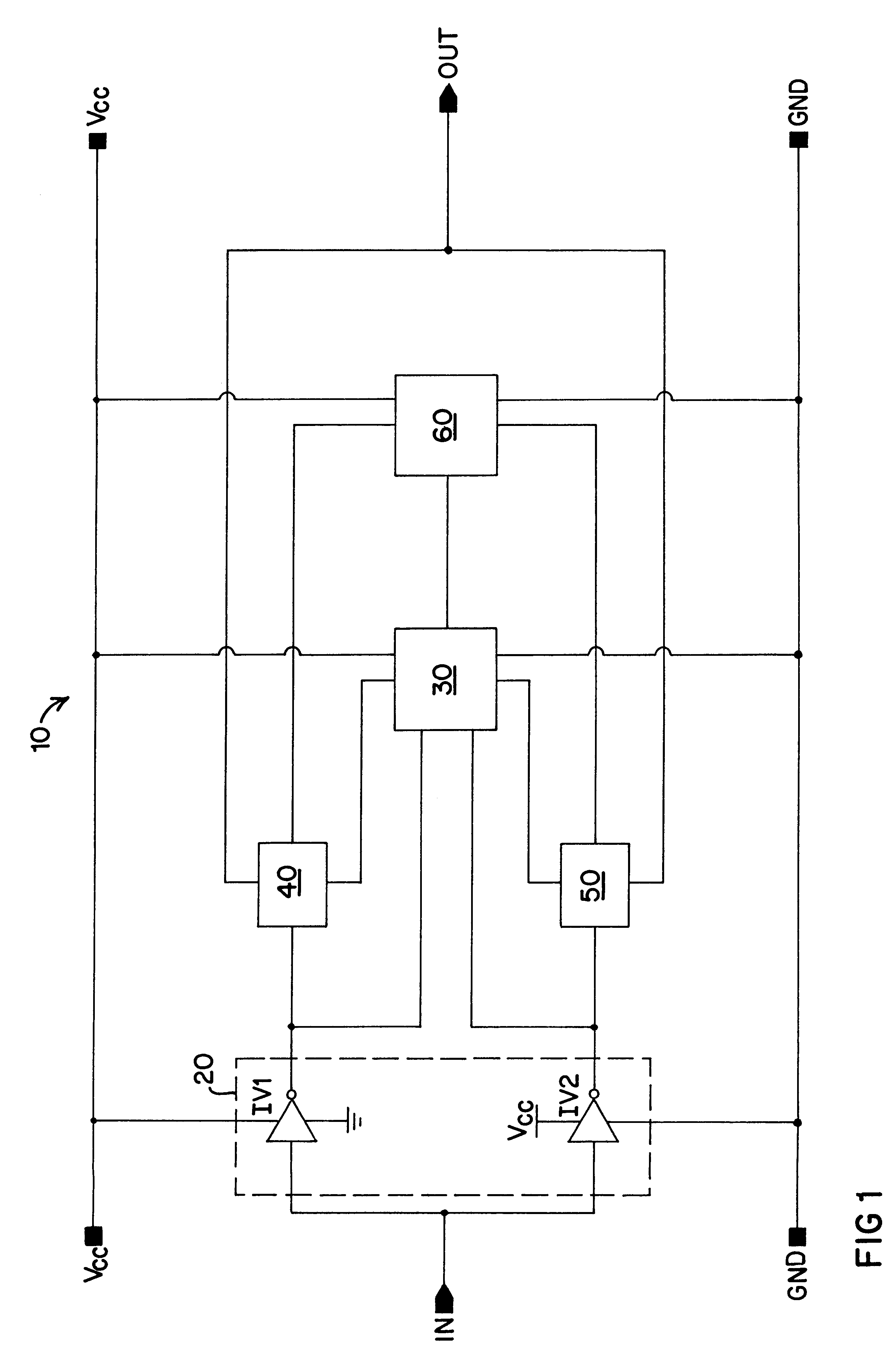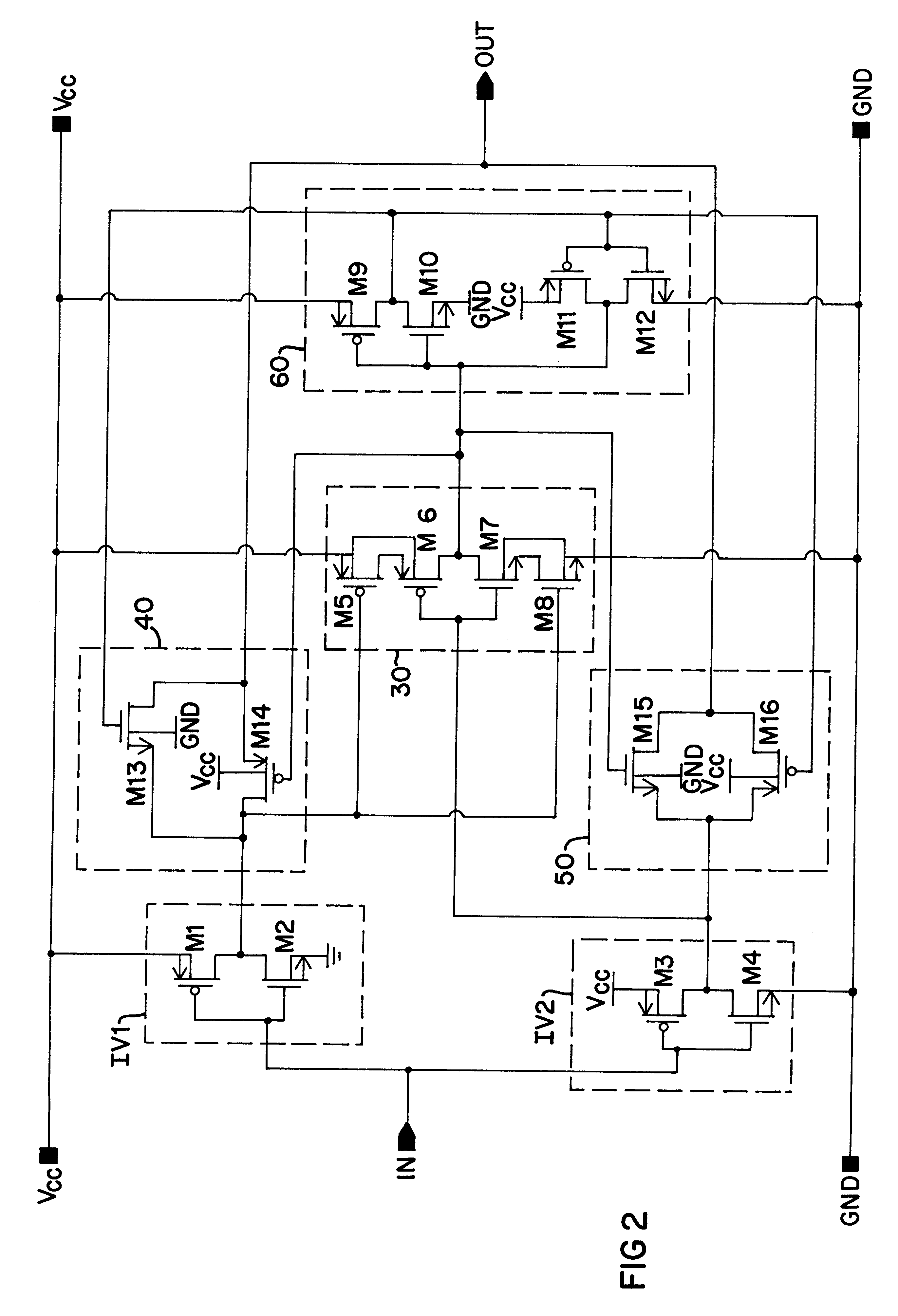Circuit for dynamic switching of a buffer threshold
a buffer threshold and circuit technology, applied in the field of circuitry, can solve the problems of rapid signal transmission, undesirable situation, signal accuracy suffers,
- Summary
- Abstract
- Description
- Claims
- Application Information
AI Technical Summary
Benefits of technology
Problems solved by technology
Method used
Image
Examples
Embodiment Construction
A simplified illustration of a buffer circuit 10 of the present invention having dynamic threshold control is shown in FIG. 1. The buffer circuit 10 includes an input section 20 formed of a first input device represented by first inverter IV1 and a second input device represented by inverter IV2, each of which acts essentially as a separate sub-buffer circuit. Although shown in FIG. 1 as two single inverters, it is to be understood that the first and second input devices may be formed by a set of inverters or other suitable switching devices. The first inverter IV1 and the second inverter IV2 are each supplied by a high-potential power rail Vcc and a low-potential power rail GND, with their inputs designed to receive an input signal at input node IN for transmission to extended circuitry coupled to the buffer 10 at output node OUT. The buffer circuit 10 also includes a logic circuit 30 having as inputs the outputs of the first inverter IV1 and the second inverter IV2. Supply rails V...
PUM
 Login to View More
Login to View More Abstract
Description
Claims
Application Information
 Login to View More
Login to View More - R&D
- Intellectual Property
- Life Sciences
- Materials
- Tech Scout
- Unparalleled Data Quality
- Higher Quality Content
- 60% Fewer Hallucinations
Browse by: Latest US Patents, China's latest patents, Technical Efficacy Thesaurus, Application Domain, Technology Topic, Popular Technical Reports.
© 2025 PatSnap. All rights reserved.Legal|Privacy policy|Modern Slavery Act Transparency Statement|Sitemap|About US| Contact US: help@patsnap.com



